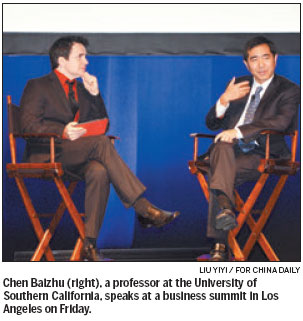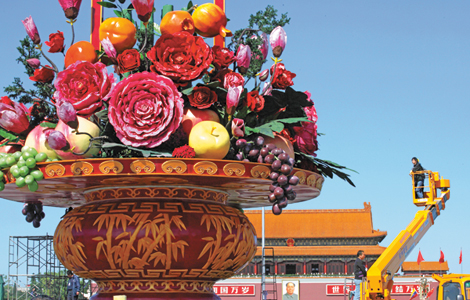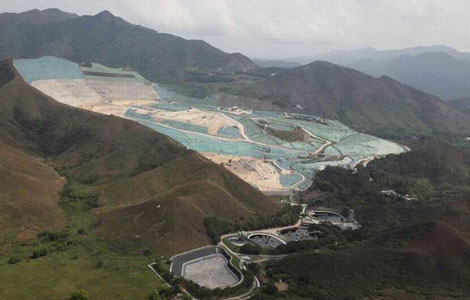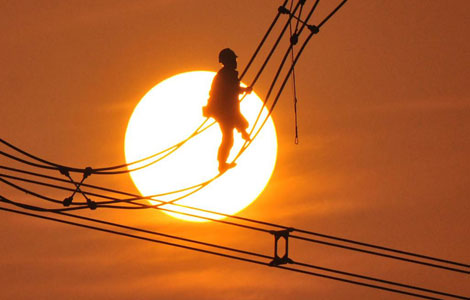China Now meet scopes out future
Updated: 2013-10-04 12:15
By Wang Jun and Liu Yiyi in Los Angeles (China Daily)
|
||||||||

Businessmen from different industries and scholars from Southern California came together for a first-ever summit to navigate investment, finance strategies and successful market entry and best business practices between the ever-expanding US and China markets.
Larry Namer, founder of E Entertainment, said he was drawn to China by all the excitement and opportunities across the Pacific Ocean. He said that by 2025, 40 billion square meters of floor space will be built in five million buildings in China - the equivalent of 10 New York cities.
In the nearer future, Starbucks plans to open its 1,000th store in China by the end of this year. "There are more Louis Vuitton stores in one city in China than in the entire US," he said.
What's more exciting is what has been happening in cyber space. Several US speakers at the conference talked about Weibo, China's equivalent of Twitter, or the so-called combination of Twitter and Facebook. It had more than 504 million registered accounts in 2012. Tencent, one of China's leading social media platforms, has a market valuation equals to Facebook's. Eleven million online transactions are made each day in China.
In 2011, China became the second-largest app-downloading country, only behind the US. In addition, China is the third-biggest market for luxury goods. Chinese buyers account for a quarter of all global retail sales of luxury items to consumers. China is expected to surpass number two Japan next year.
Three new theaters are opened everyday in China, and three new iMax screens are added each week, according to an entertainment executive at the conference.
The young generation is the driving force. According to statistics, the average Chinese millionaire is 39 years old, 15 years younger than their US counterparts.
Bill McDermott, Co-CEO of SAP, a leading multinational software corporation that makes enterprise software to manage business operations and customer relations, said his company has adopted China as its second home. It terms of China's scope and scale, the country is "SAP's number one market in the next ten years", McDermott said.
Amidst all the excitement, the US-China trade imbalance has been a concern and argument in the bilateral relationship, according to Chen Baizhu, a professor at the University of Southern California.
US exports to China were $110 billion last year, while imports from China were $450 billion.
Chen confessed that during his last trip to China, he smuggled in 10 avocados because his mom in China loves them and they are not easy to find there. It's only one example of what the US has a lot of to sell to China, along with Boeing aircraft, Hollywood movies and education services, he said.
The US government didn't need to close to celebrate China's National Day on Oct 1, Chen teased, "there are a lot of demands from China, you only need to find them".
"The economic growth in the past was low quality growth, which included a large portion of labor intensive products and exports to the US. However, Chinese economic growth now focuses on domestic consumption," said Chen.
"The re-calibrated growth rate based on Morgan Stanley's projection shows that China's growth rate will stay around five to 6 percent until 2040. Therefore, China may surpass the US and become the largest economy in the world as early as 2020," said Chen. "The Shanghai Free Trade Zone is a great opportunity for the US. Pudong is becoming the next Hong Kong and Macao in China."
The Chinese people are very happy to be Chinese, said Namer, who spent years living in China. However, they increasingly love to travel. Chinese demand for international travel is expected to grow 17 percent annually.
"As long as the door's cracked open, it can't be closed. It will only open wider and wider," said Chen.
wangjun@chinadailyusa.com
(China Daily USA 10/04/2013 page10)

 Driver shot dead in car chase at US Capitol
Driver shot dead in car chase at US Capitol
 NY SUV driver's wife: We were in 'grave danger'
NY SUV driver's wife: We were in 'grave danger'
 Death toll in sunk boat off Italy could top 200
Death toll in sunk boat off Italy could top 200
 A southern staple
A southern staple
 Tropical Storm Karen aims for US Gulf Coast
Tropical Storm Karen aims for US Gulf Coast
 City rush, island time
City rush, island time
 Death toll in Italy migrant boat wreck rises to 94
Death toll in Italy migrant boat wreck rises to 94
 Lang Lang: First Chinese winner of Classic Brits Award
Lang Lang: First Chinese winner of Classic Brits Award
Most Viewed
Editor's Picks

|

|

|

|

|

|
Today's Top News
DC shutdown gets social media in China all in a twitter
Gunfire forces brief lockdown at US Capitol
Mutual help the best: IMF chief
A new 'maritime silk road' called for
Chinese investment in US grows
'Bourgeoise' iPhone rules
Obama cancels APEC trip due to gov't shutdown
US hints Iran could get some sanctions relief
US Weekly

|

|






